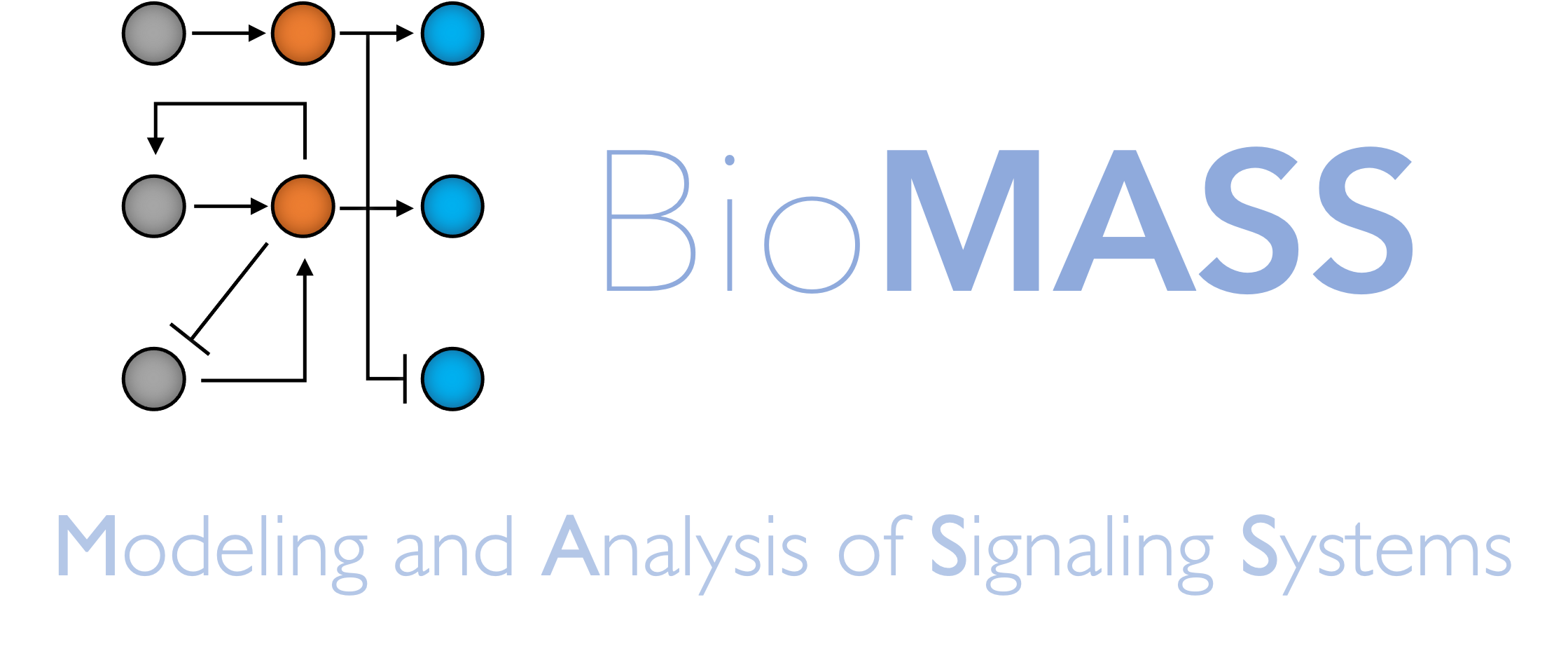BioMASS is a computational framework for modeling and analysis of biological signaling systems in Python.
- Documentation: https://biomass-core.rtfd.io
- Source code: https://github.com/biomass-dev/biomass
- Bug reports: https://github.com/biomass-dev/biomass/issues
- Citing in your work: https://biomass-core.rtfd.io/en/latest/citing.html
It provides useful tools for numerical simulation, parameter estimation, network analysis, and result visualization.
The BioMASS library is available at the Python Package Index (PyPI).
$ pip install biomassBioMASS supports Python 3.8 or newer.
-
Imoto, H., Zhang, S. & Okada, M. A Computational Framework for Prediction and Analysis of Cancer Signaling Dynamics from RNA Sequencing Data—Application to the ErbB Receptor Signaling Pathway. Cancers 12, 2878 (2020). https://doi.org/10.3390/cancers12102878
-
Imoto, H., Yamashiro, S. & Okada, M. A text-based computational framework for patient -specific modeling for classification of cancers. iScience 25, 103944 (2022). https://doi.org/10.1016/j.isci.2022.103944
-
Arakane, K., Imoto, H., Ormersbach, F. & Okada, M. Extending BioMASS to construct mathematical models from external knowledge. Bioinformatics Advances 4, vbae042 (2024). https://doi.org/10.1093/bioadv/vbae042









